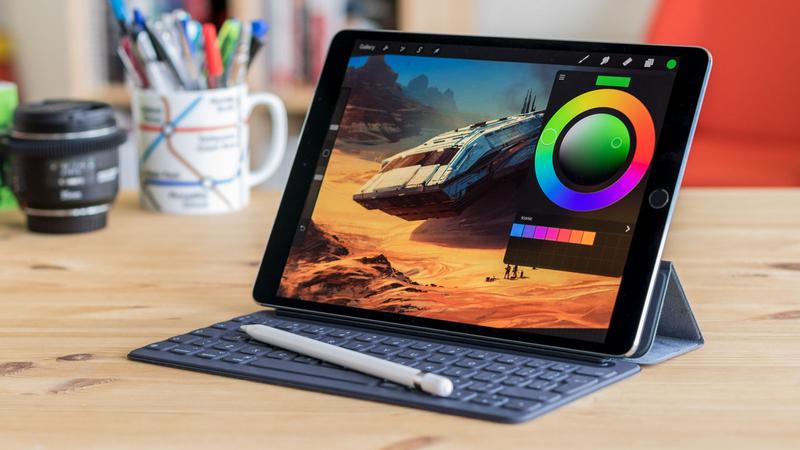I was actually more excited about getting a fresh battery than having the bright spot fixed. The bright spot wasn’t really a big deal. You could only see it against a white background and it wasn’t that noticeable. It was like a dim star in the sky that seemed to disappear when you looked directly at it. It was more visible with your peripheral vision.
So I get my new iPad Pro replacement and restore it from the iCloud backup from my old iPad. I promptly discovered that battery life in my fresh new iPad Pro was about the same as my old iPad Pro. There was no discernible difference in battery life with my fresh new iPad Pro from my year old iPad.
Only a few months later, my replacement iPad Pro also developed the same white spot issue that my previous iPad had. It seems to be a common problem with this model. Apple promptly replaced my iPad Pro under warranty again. And again, this new iPad Pro with a fresh battery showed about the same rate of battery depletion that my previous two models did. No change.
By no difference, I mean that I was losing about 10-15% of my battery life per hour of use. Which isn’t too bad really. Apple rates the iPad as having a 10 hour battery life so they would say that 10% per hour is normal. The problem is that it seems like my iPad previously used about 5-10% per hour prior to 2019. So in comparison to how it used to behave, it seems much worse. And since I have had two fresh iPad Pros, I know the problem isn’t the battery hardware. It’s software related.
I happen to notice the battery drain more in the first hour of use in the morning. I’m not saying that it drains faster in the morning, it’s just that it’s easier for me to gauge 100-90% because I notice more at that time. And I rarely let it go below 40%. So it’s possible that overall battery life is the same and there is only a change in the algorithm.
Could it be that Apple used to do what auto makers do with gas tanks? Showing slower usage in the first half and the second half was depleted comparatively quicker? And perhaps they’ve tried to correct the battery meter so that it’s more accurate?
Or could Apple be throttling the processor less due to the iPhone throttling uproar a couple years ago? Could Apple be shifting priorities more to performance versus battery life as long as it comes close to 10 hours? Did something change in iOS 12 which was released in the fall of 2018 and I just didn’t notice until early 2019?
All I know is that I’ve been using iPads since 2010 and my battery meter is going from 100% to 50% faster than it ever has. No other combination of iPad model and iOS has ever seemed to chew through these big batteries faster than now.
Battery life is one of the reasons why I’ve always been a heavy iPad user. Especially when iPhone battery life was so much shorter than now. I use my iPad for work so it’s always been great that I could take notes and read from my iPad all my workday and still have almost 50% battery life when I got home in the evening. Try doing that with a laptop running on battery power. Not gonna happen.
I hope that Apple is simply working on their battery meter algorithms. I can’t say that my battery lasts any shorter in total than it did before because I never run out of battery life in a single day. It just ends the day at a lower percent than it used to. So if the final 20% last longer than it used to, I would never know.



 RSS Feed
RSS Feed